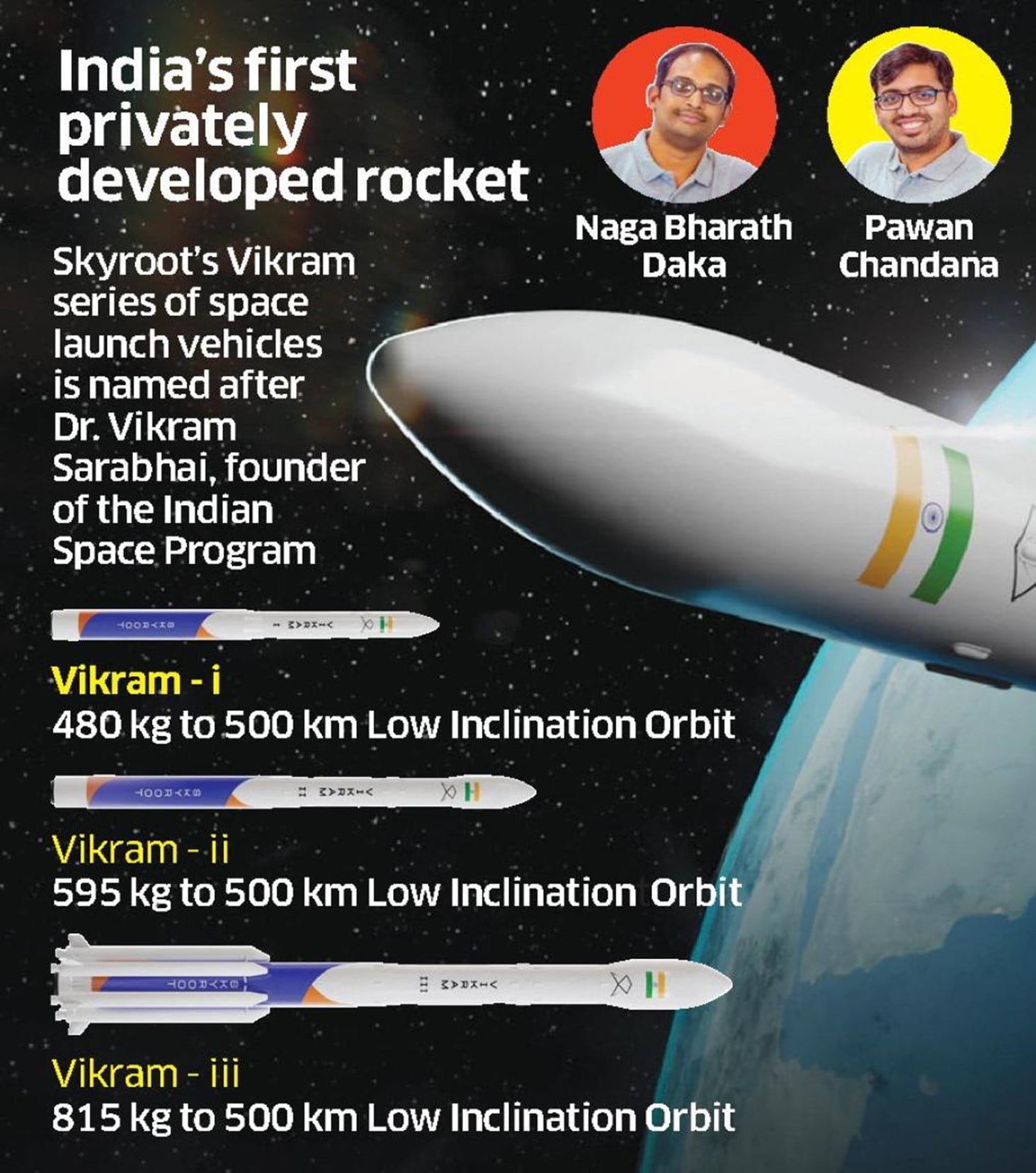Science and Technology
In News: India’s first privately developed rocket — Vikram-S — is set for a launch between November 12 and 16, Hyderabad-based space startup Skyroot Aerospace announced.
- The maiden mission of Skyroot Aerospace, named ‘Prarambh’ (the beginning), will carry three customer payloads and is set for launch from Indian Space Research Organisation’s launchpad at Sriharikota.
- The launch mission will be a suborbital spaceflight.
- Among the three payloads is a 2.5kg satellite of another space startup, Space Kidz India, which has been built by students from India, the US and Indonesia.
- Skyroot, a two-time national award winner, is the first start-up to sign a Memorandum of Understanding (MoU) with ISRO in this regard.

Vikram-S rocket
- The Vikram series, named after the founder of India’s space programme Dr Vikram Sarabhai, are all-carbon-fibre structures that can launch up to 800 kg of payloads to the Low Earth Orbit.
- The Vikram-S rocket is a single-stage sub-orbital launch vehicle which would carry three customer payloads and help test and validate the majority of the technologies in the Vikram series of space launch vehicles.
Suborbital spaceflight:
- A suborbital spaceflight refers to a height of around 100km from the Earth’s surface, and is done at a lower altitude than an orbital flight, which reaches at least a low-Earth orbit — between around 200km to 2,000km from Earth.
- Suborbital flights are known to be important for conducting tests of space missions, before final commercial missions take place.
New era for Indian space sector
- With this mission, Skyroot Aerospace is set to become the first private space company in India to launch a rocket into space, heralding a new era for the space sector which was opened up in 2020 to facilitate private sector participation.
Must Read: Privatisation of Space Sector + Role of private sector in Space
Source: The Hindu
Previous Year Question
Q.1) With reference to India’s satellite launch vehicles, consider the following statements: (2018)
- PSLVs launch the satellites useful for Earth resources monitoring whereas GSLVs are designed mainly to launch communication satellites.
- Satellites launched by PSLV appear to remain permanently fixed in the same position in the sky, as viewed from a particular location on Earth.
- GSLV Mk III is a four-staged launch l vehicle with the first and third stages l using solid rocket motors; and the second and fourth stages using liquid rocket engines.
Which of the statements given above is/are correct.?
- 1 only
- 2 and 3
- 1 and 2
- 3 only














